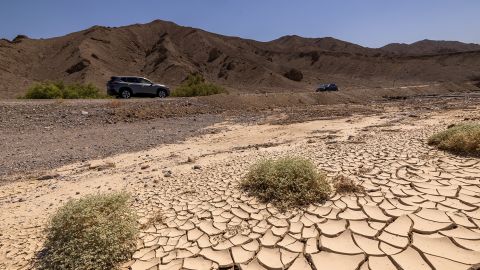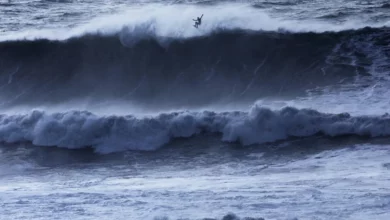
The ominous findings are from the Indicators of Climate Change in California Report, which was published through California’s Environmental Protection Agency.
“The stark reality of climate change in California is clear: record-high temperatures, an unrelenting drought, and unprecedented wildfires. The evidence continues to mount of the impacts of climate change on the health, safety, and well-being of the state’s residents,” authors of the report wrote.
The extensive report documents the causes and impacts of climate change by studying 41 scientifically measured indicators provided by more than 100 experts from state and federal agencies, research institutions, academia and includes input from 40 Native American tribes.
One of the most significant climate change impacts in California than the state’s recent extreme heat and multiyear drought.
In September 2021, the entire state of California was in a drought, with 88% in the most severe tiers of extreme to exceptional drought, the climate change report says.
That marked a one-month snapshot of a much longer trend: The last two decades were the driest in the past millennium, according to the report, which points to a 2.5-degree Fahrenheit increase in temperature since 1895 with that rise accelerating since the 1980s, said Amy Gilson, CalEPA’s deputy director for external and legislative affairs.
“This is driven primarily by warmer nights which are getting warmer at a rate three times faster than daytime temperatures,” Gilson said, noting that extreme heat events are becoming more frequent across the state.
Just this past September, the West Coast broke nearly 1,000 temperature records during a 10-day heat wave, CalEPA said. As many areas baked under triple-digit heat for several consecutive days, thousands of California residents were asked to ration their power use to avoid straining the grid.

Climate change impacts many aspects of life
As temperatures rise and precipitation declines, annual snowpack and glaciers are vanishing from California’s high elevations, which in turn is straining reservoir and river levels in the state.
“In the Trinity Alps, the glaciers and snowfields have virtually disappeared,” Gilson said. “In the Sierra Nevada, some of the largest glaciers have lost 65% – 90% of their area.”
These shrinking glaciers represent a decline in freshwater supplies crucial for ecological needs.
Declining freshwater supply impacts the salmon population. It also impacts irrigation for agriculture – more than a third of the country’s vegetables and 75% of its fruits and nuts are grown in California, according to the California Department of Food and Agriculture.
And the changes in temperature are also having an adverse effect on a wide range of species.
“In the Mojave Desert, bird populations have collapsed,” said Gilson, adding that “75% to 85% of the mammals and birds surveyed in the Sierra Nevada have changed where they are living. They’ve changed their elevations.”
The last 20 years saw a severe uptick in wildfires erupting across California, according to the report.
More than 4 million acres were charred in wildfires in 2020, more than doubling the area burned during any other year on record.
Plus, half of the state’s largest wildfires in the past 70 years happened in 2020 and 2021, exacerbated by the hotter and drier weather and the ongoing megadrought. Overall, the average number of acres burned has increased dramatically in the last few years.
Climate change is also impacting human health, the report noted. Heat-related illnesses reported by California workers rose about threefold from 2000 to 2017, particularly impacting farm workers, police officers and firefighters.
Also, recent wildfires have led to deaths and injuries as well as widespread exposure to harmful levels of wildfire smoke, according to the report.
Native American tribes also pointed to climate change leading to soil erosion, loss of wetlands and springs, loss of plants as well as changes to animal migration patterns – which in turn cause a shift in diet and cultural practices.
“These impacts are tied to water, heat, wind and fire hazards and without a return of water to the area,” Gilson said.
CNN’s Aya Elamroussi contributed to this report.




